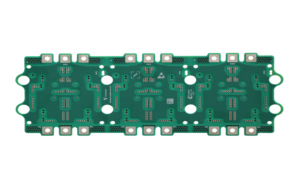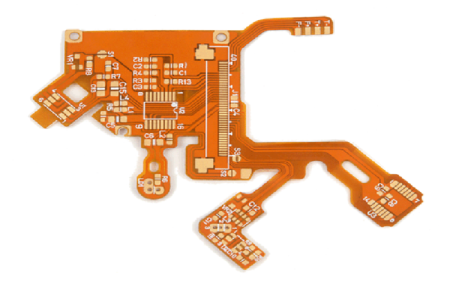Flexible PCBs offer several advantages over traditional rigid PCBs, making them a preferred choice in various electronic applications. Some of the key advantages of flexible PCBs include:
Flexibility: As the name suggests, flexible PCBs can bend and conform to fit into tight spaces or irregularly shaped enclosures. This flexibility allows for more compact and space-efficient designs, making them ideal for applications where space is limited or where the PCB needs to be folded or twisted.
Weight Reduction: Flexible PCBs are typically lighter than their rigid counterparts, which can be beneficial in weight-sensitive applications such as aerospace, automotive, and portable electronics. The use of flexible materials also reduces the overall weight of the PCB assembly, contributing to overall weight savings in the device or system.
Improved Reliability: Flexible PCBs offer improved reliability compared to traditional wire harnesses or ribbon cables, as they have fewer points of failure and are less prone to issues such as wire fatigue, breakage, or intermittent connections. Additionally, flexible PCBs can be designed to withstand bending, vibration, and other mechanical stresses encountered in real-world applications, ensuring long-term reliability.
High-Density Interconnects: Flexible PCBs can incorporate high-density interconnects, allowing for the routing of a large number of signals in a compact space. This makes them suitable for applications requiring a high level of integration, such as medical devices, smartphones, and wearable electronics.
Cost Savings: While the initial manufacturing cost of flexible PCBs may be higher than rigid PCBs, they can ultimately lead to cost savings by reducing the need for additional components such as connectors and wire harnesses, simplifying assembly processes, and improving overall system reliability. Additionally, the lightweight nature of flexible PCBs can lead to cost savings in terms of transportation and handling.
Design Flexibility: Flexible PCBs offer greater design flexibility compared to rigid PCBs, as they can be shaped, folded, or twisted to fit into complex geometries or conform to specific design requirements. This allows for more creative and innovative designs, enabling engineers to optimize the performance and functionality of the electronic device or system.
Overall, the advantages of flexible PCBs, including their flexibility, weight reduction, improved reliability, high-density interconnects, cost savings, and design flexibility, make them an attractive choice for a wide range of electronic applications.








